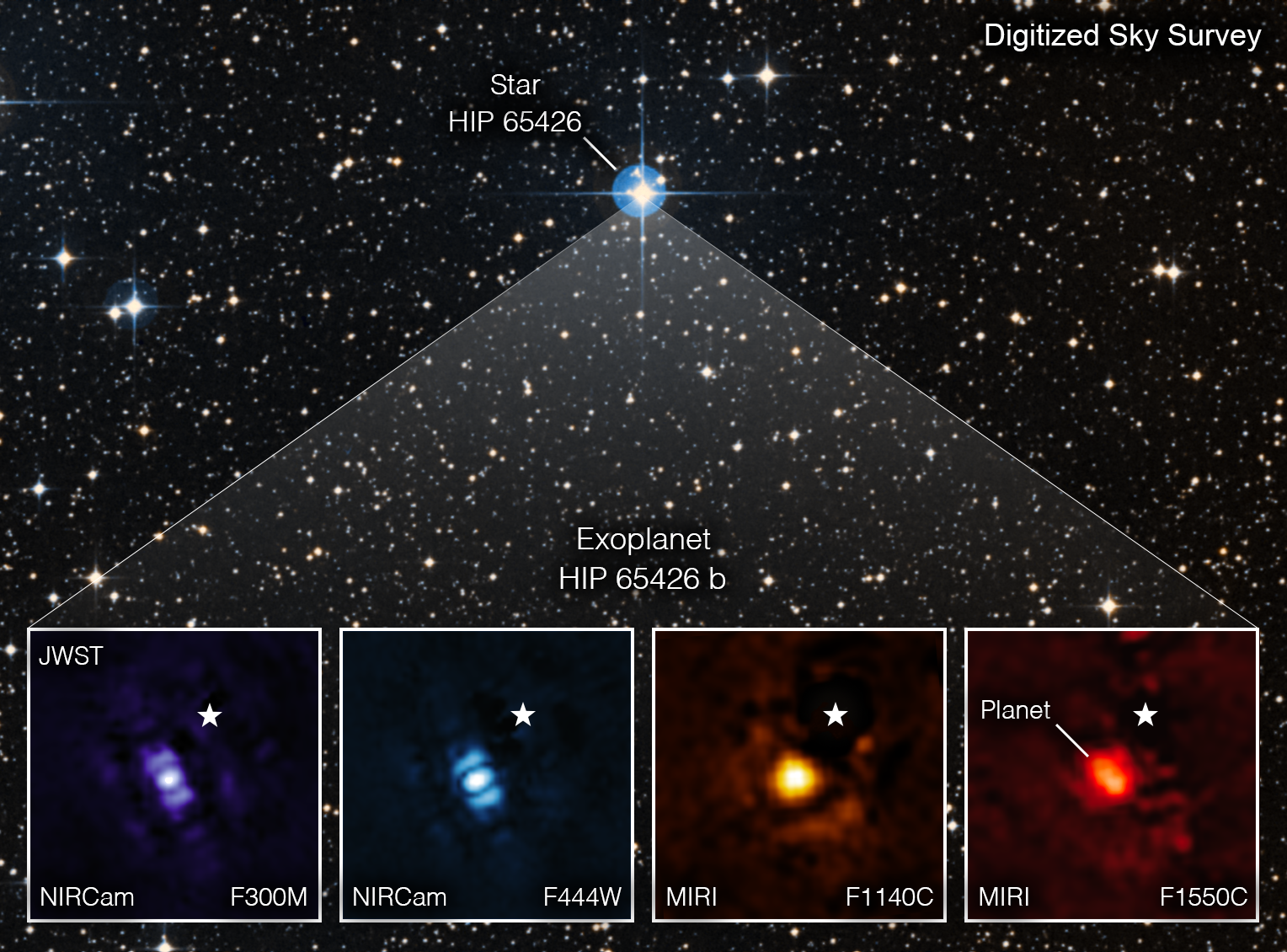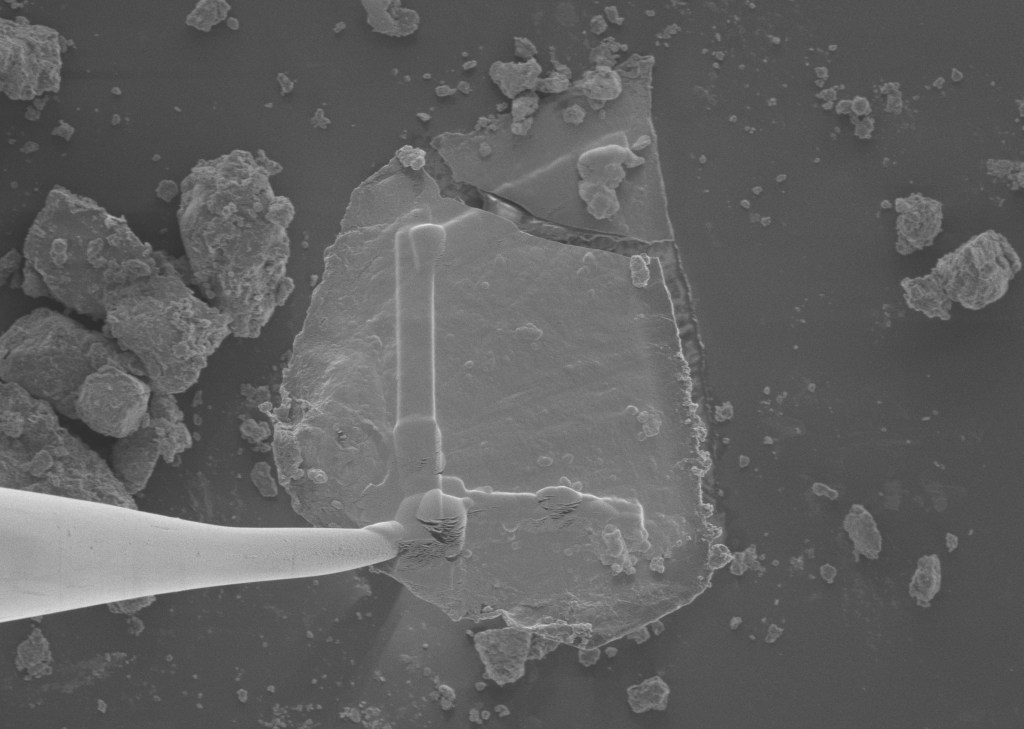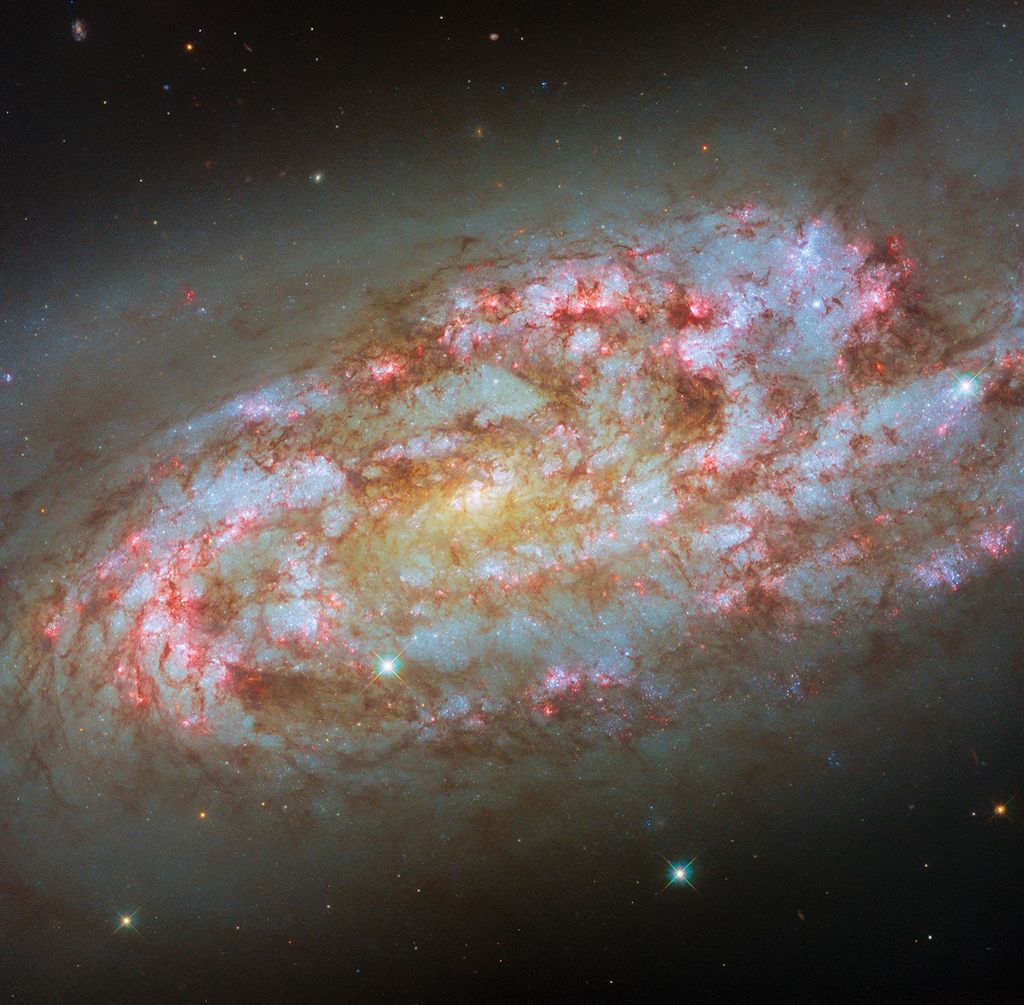1 min read
Image of Exoplanet HIP 65426 b in Near and Mid Infrared

Editor’s Note: The findings reported here are based on preliminary results that have not been shared formally with the scientific community via peer-reviewed publication.
This image shows the exoplanet HIP 65426 b in different bands of infrared light, as seen from the James Webb Space Telescope: purple shows the NIRCam instrument’s view at 3.00 microns, blue shows the NIRCam instrument’s view at 4.44 microns, yellow shows the MIRI instrument’s view at 11.4 microns, and red shows the MIRI instrument’s view at 15.5 microns. These images look different because of the ways that the different Webb instruments capture light. A set of masks within each instrument, called a coronagraph, blocks out the host star’s light so that the planet can be seen. The small white star in each image marks the location of the host star HIP 65426, which has been subtracted using the coronagraphs and image processing. The bar shapes in the NIRCam images are artifacts of the telescope’s optics, not objects in the scene.
About the Object
- R.A. PositionR.A. PositionRight ascension – analogous to longitude – is one component of an object's position.13:24:36
- Dec. PositionDec. PositionDeclination – analogous to latitude – is one component of an object's position.-51:30:16
- ConstellationConstellationOne of 88 recognized regions of the celestial sphere in which the object appears.Centaurus
- DistanceDistanceThe physical distance from Earth to the astronomical object. Distances within our solar system are usually measured in Astronomical Units (AU). Distances between stars are usually measured in light-years. Interstellar distances can also be measured in parsecs.385 light-years
About the Data
- Data DescriptionData DescriptionProposal: A description of the observations, their scientific justification, and the links to the data available in the science archive.
Science Team: The astronomers who planned the observations and analyzed the data. "PI" refers to the Principal Investigator.This image was created from JWST data from proposal: 1386 (S.Hinkley)
- InstrumentInstrumentThe science instrument used to produce the data.MIRI, NIRCam
- Exposure DatesExposure DatesThe date(s) that the telescope made its observations and the total exposure time.17 July 2022, 30 July 2022
- FiltersFiltersThe camera filters that were used in the science observations.F300M, F444W, F1140C, F1550C
- Object NameObject NameA name or catalog number that astronomers use to identify an astronomical object.HIP 65426 b
- Object DescriptionObject DescriptionThe type of astronomical object.Gas giant exoplanet
- Release DateSeptember 1, 2022
- CreditImage: NASA, ESA, CSA, Alyssa Pagan (STScI); Science: ERS 1386 Team, Aarynn Carter (UC Santa Cruz)
Share
Details
Laura Betz
NASA’s Goddard Space Flight Center
Greenbelt, Maryland
laura.e.betz@nasa.gov
NASA, ESA, CSA, Alyssa Pagan (STScI)
ERS 1386 Team, Aarynn Carter (UC Santa Cruz)































